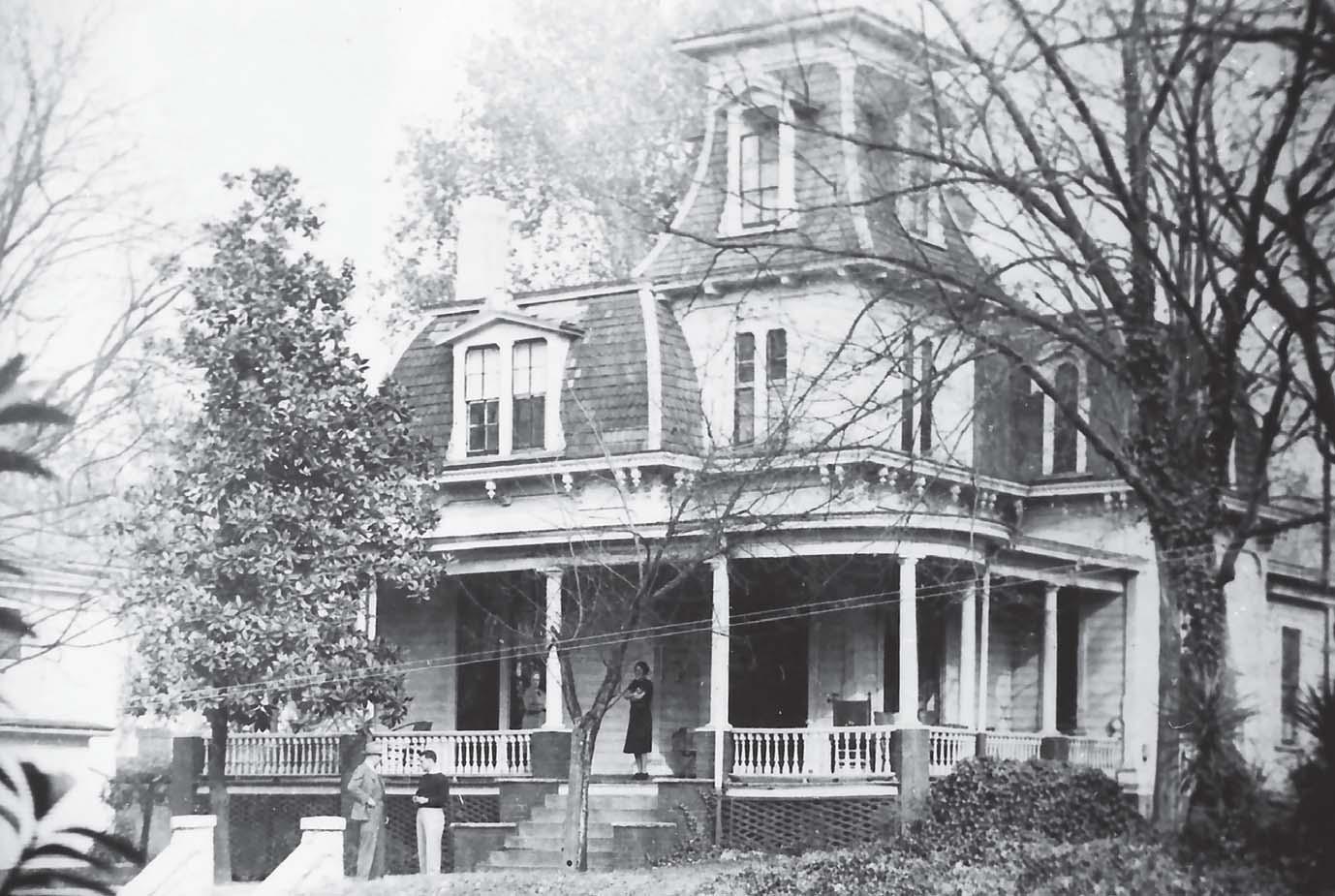
8 minute read
Preserving History
A pair of handy homeowners combine elbow grease, attention to detail and architectural detective work to restore a long-neglected house to its Victorian glory
by AYN-MONIQUE KLAHRE photography by KEITH ISAACS
Advertisement
Randy, Heather, WIlliam and Emily Scott on the home’s front steps, this page. They replaced roof shingles, stripped and painted the whole structure and pulled out every window to restring weights. Master woodturner Alan Leland created new finials to match ones that had rotted away on top of the windows and the highest point of the roof. “We had to rent a boom crane to get up there!” says Heather Scott.
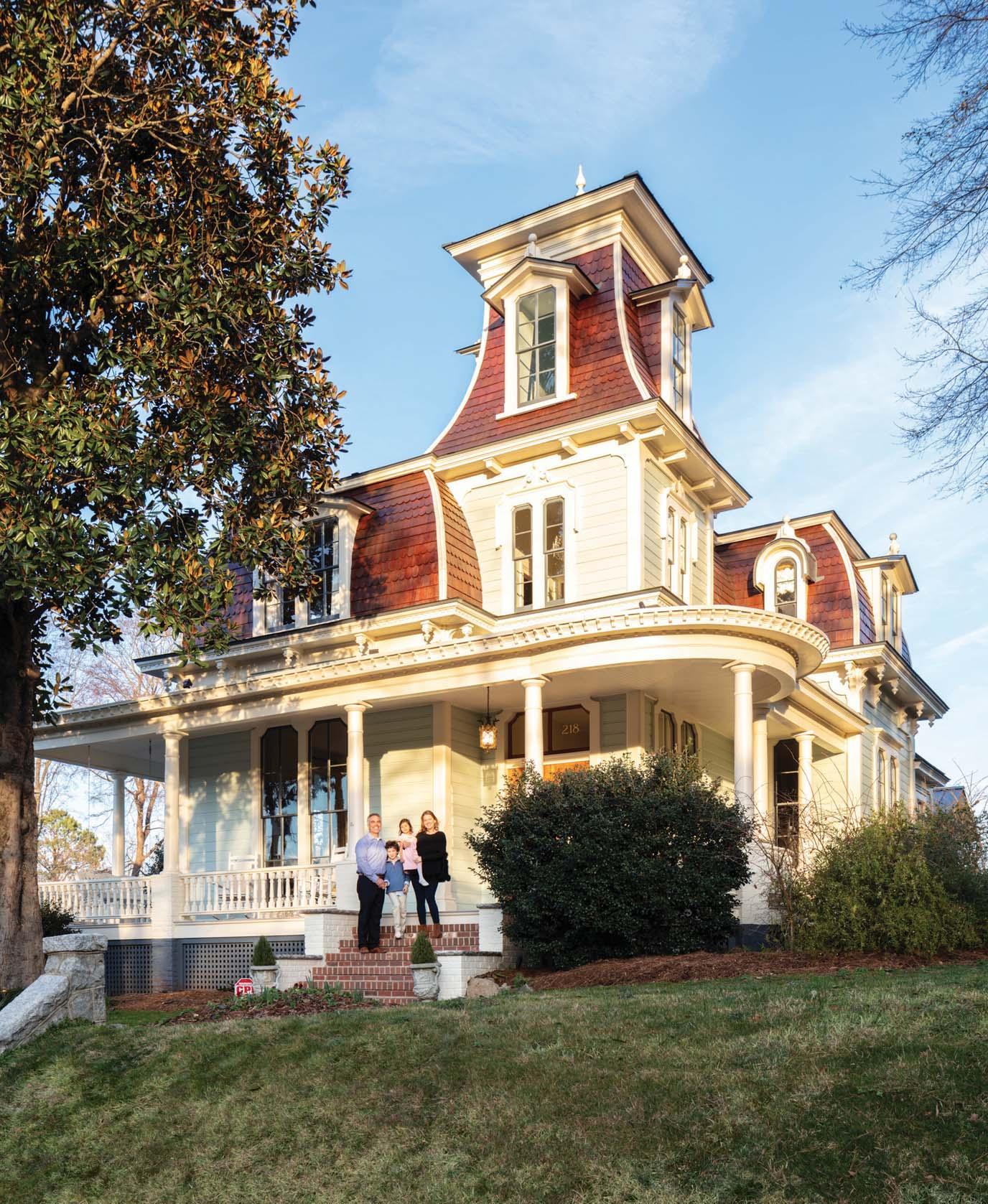

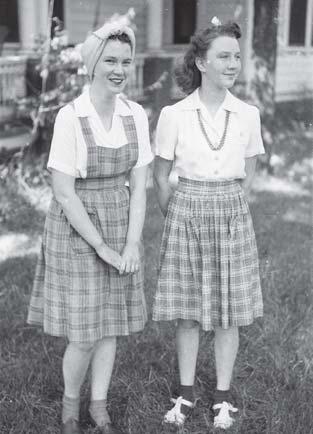

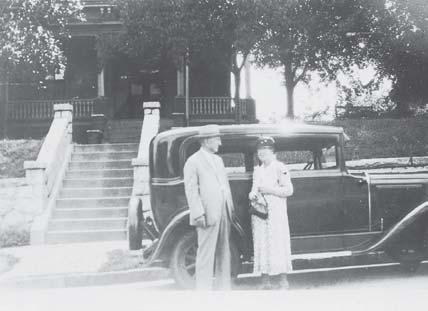
The Parker family, including their two daughters, lived in this home for a half-century. After the renovation, the Scotts chose to add “Parker” to the home’s official name on the historic registry to honor their role in preserving the location. o
“When I was a teenager, I told my grandma this was my dream house,” recounts Heather Scott. “And she said, Darlin’, you can’t live there, that’s the liquor-runnin’ neighborhood! ” And so it was, at the time: A oncegrand house that fell into hard times, with a history that mirrors the development, fall and revitalization of downtown Raleigh. If you’ve ever strolled through Historic Oakwood, you’ll know the HeckPool-Parker house: Perched on a hill with a stop-in-your-tracks Mansard roofline, the robins-egg-blue home is a landmark in the neighborhood. Designed by architect George H.S. Appleget, this classic Second Empire home was built around 1875 by Jonathan McGee Heck, a lawyer and Civil War colonel turned real estate developer. He sold it to Stephen Decatur Pool, another former colonel who was working as the state Superintendent of Public Instruction. According to local historian Matthew Brown, Pool and his wife were unable to keep up with payments on the house; it was foreclosed upon and the Hecks rented it until their daughter and family moved in (to whom they sold the house at the price of “natural love and affection, plus one dollar”). It later passed on to the Jones family, then the Parker family by 1910, who owned the house until 1961, making key additions like building the retaining wall out front, extending the front porch and constructing a carriage house and two-story addition. By the 1950s, they were renting rooms on the top floor to World War II veterans. As the neighborhood declined through the 1960s, the home changed ownership and served as a rooming house. In 1972, Annie Brantley Gardner (later Barbour), who owned several properties in the area, bought and repaired the house, turning it into seven efficiency apartments, each with its own bathroom and kitchenette. In 1974, the home narrowly avoided being demolished to make room for an on-ramp for the highway when the Society for the Preservation of Oakwood was formed to protect the historic neighborhood. By 1990, Barbour and her husband moved into the apartment at the rear of the house, leaving the main part of the house unoccupied for the next two decades. And there it sat until Barbour passed away, and Scott’s husband Randy, a firefighter, switched jobs. He found himself driving down East Street to the new fire station, and one day a “for sale by owner” sign popped up on the lawn. He called his wife and she headed there that night. “I could hear the car keys jingling when I told her it was for sale,” he laughs. But the house was out of budget, especially considering the many renovations it would take to turn an apartment building into a family home. “We spent months dreaming up plans and revising our budgets on paper napkins at The Raleigh Times,” says Randy Scott. After more than a year—and the threat of a developer buying the property to knock
The front hallway in 1939, left, and as it is today. In the 1960s, the home was divided into seven efficiency apartments, with the doors visible here serving as entrances to two of them. The Scotts opened up the kitchen and added an extension off the back of the home.
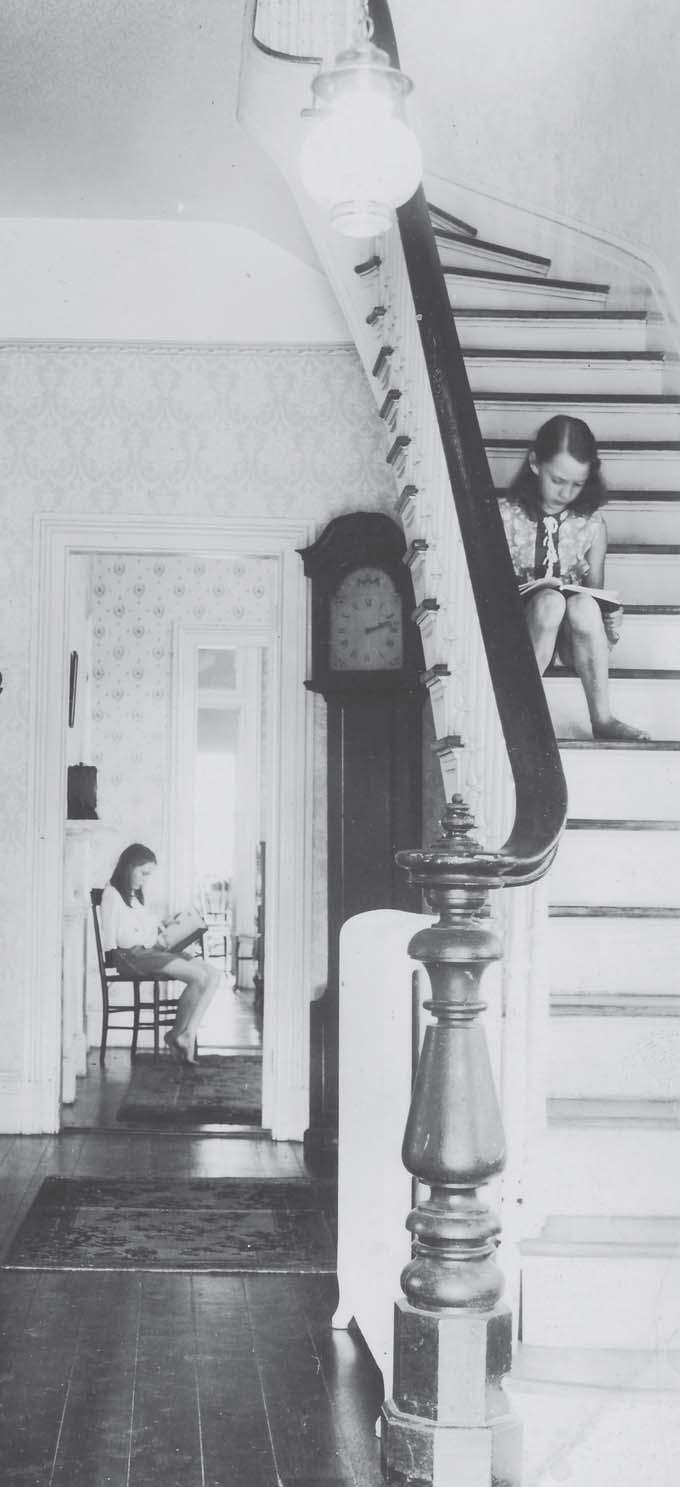
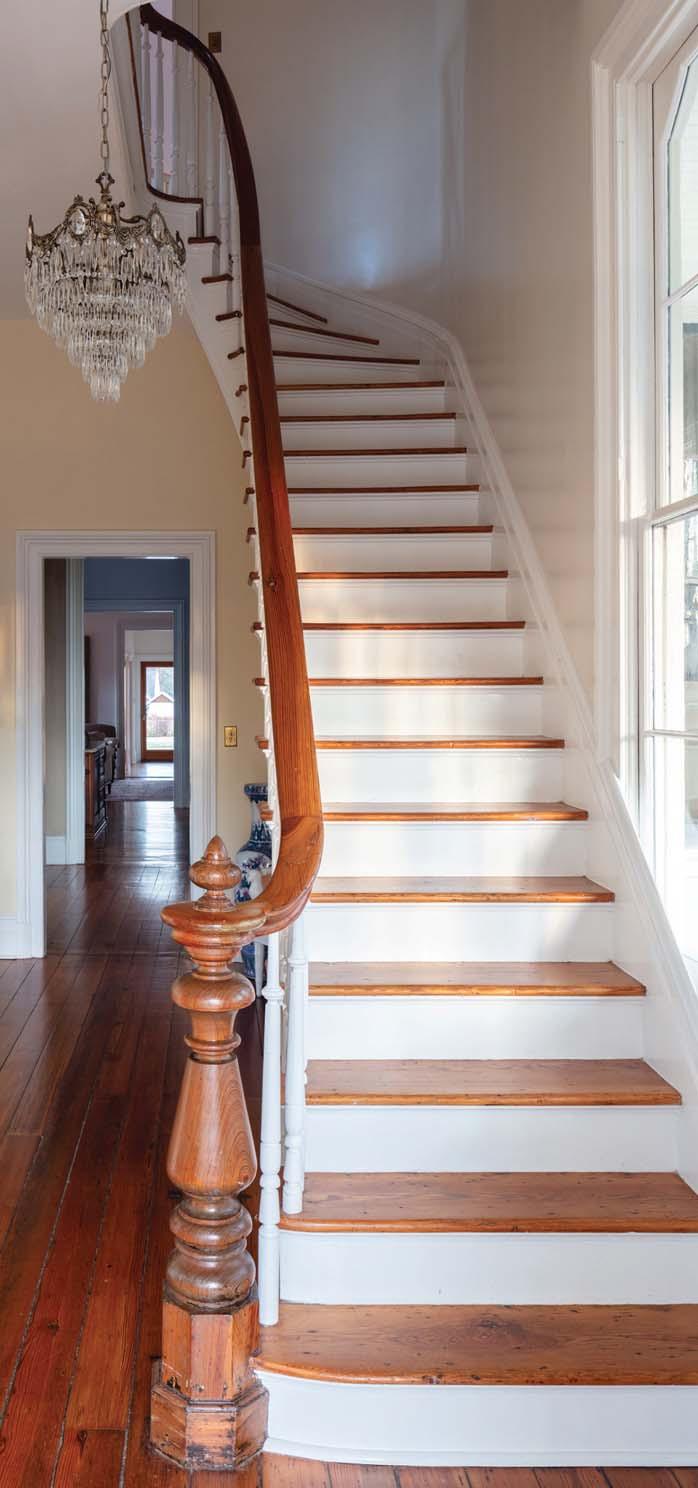
The dining room in 1926 and present day, below. When the Scotts gut-renovated the home, they removed the window and shifted the doorway to accomodate the new kitchen. They closed the doorway to the left, formerly a bathroom, to create a walkin pantry that’s accessed from the kitchen.
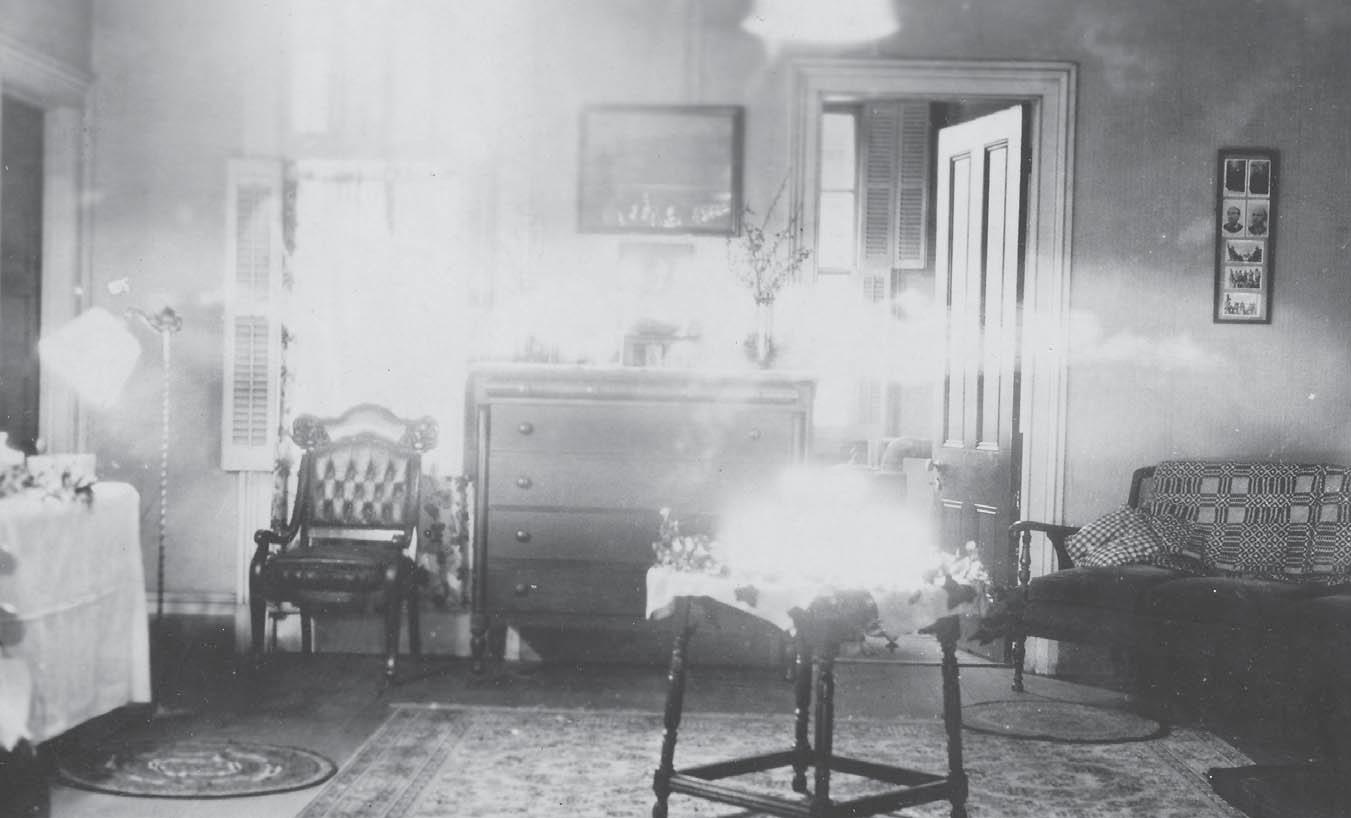
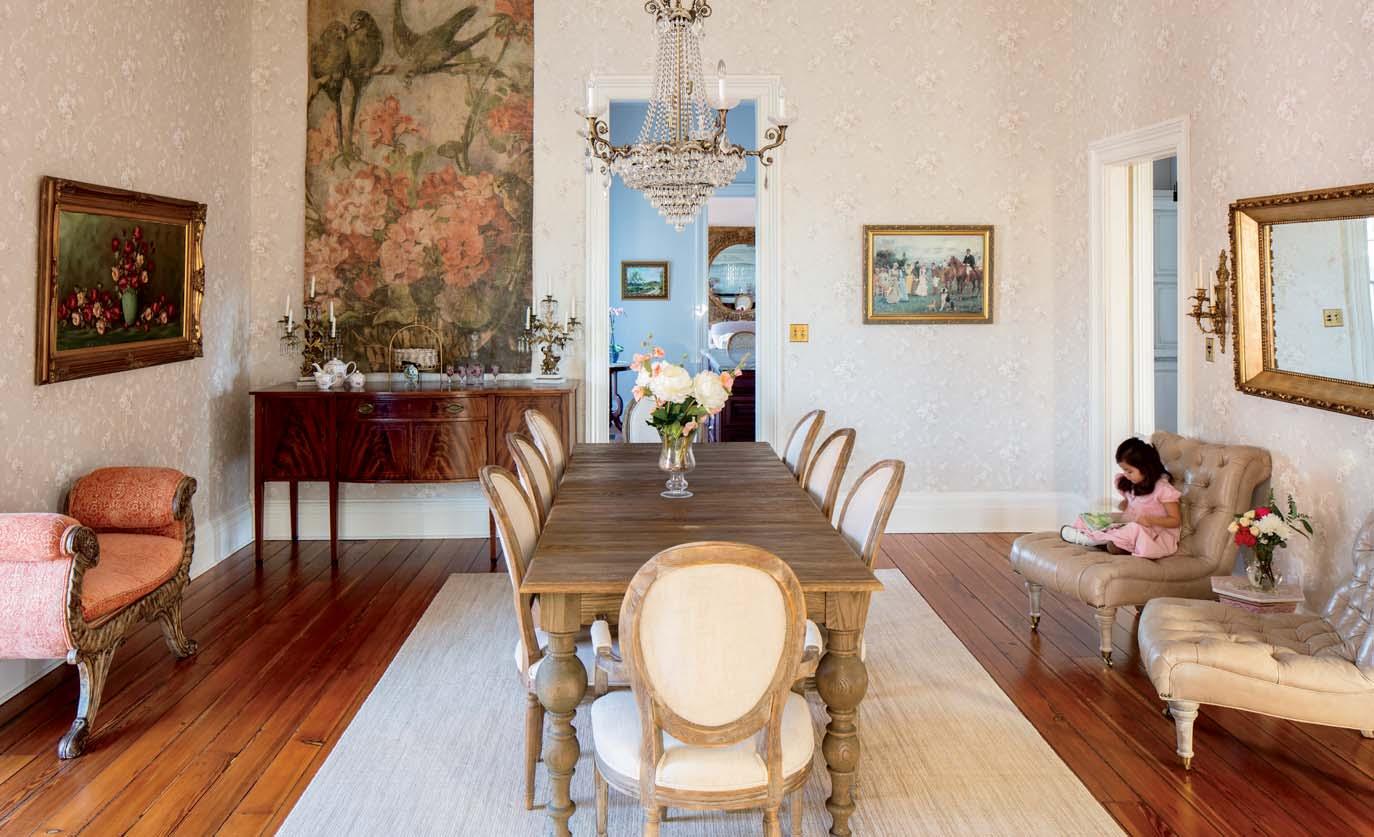
down the home for new construction— the price came down enough for them to take the plunge. “After we bought it, I’d walk through the house and think, where do I even start?” says Randy Scott. “There was the sheer size of it, and everything needed repair; there wasn’t a single thing that didn’t need to be done.” The floors sloped, the wiring was shot and the house had been chopped up and added on to: seven kitchenettes and seven bathrooms would have to be pulled out. The couple worked with the North Carolina State Historic Preservation Office to piece together the period floor plan. “The team from the Preservation Office would literally crawl under the house to look at the age of the brick to figure out what was original and what wasn’t,” he says. The Scotts stripped away the more recent additions—linoleum floors, fake mantels and dropped ceilings among them—then started the painstaking task of putting the home back to its original form. They reached out to former owners to find photos and floor plans from decades before—even doing a walk-through with the aging Parker sisters, who shared their memories from growing up in the home in the early 20th century. They lucked out when they learned that the N.C. State School of Design had done a takeoff of a neighboring home, one that’s a mirror image of their own, in the 1960s; that helped them replicate the window details, trim and framing around the front façade to its original splendor. As the Scotts started adding details back in, they reached out to experts and artisans to get everything back in period detail. “To build the apartments, they had just bashed through the walls, bashed through the windows, cut the trim wherever they needed to—so the biggest challenge was patching the place back together,” says Randy Scott. They got permission from the Preservation Office to remove the plaster from the walls (63 tons of it), which allowed them to completely redo the electrical, address rot and reframe the structure. They salvaged the heart pine from the demolition to patch floors and complete a new addition. “They called me the wood hoarder,” he says. “I’d go out to the barn on the weekends and pull out nails for hours—I filled five buckets!” All in all, they kept much of the original floor plan, adding a few bathrooms, closets and an up-to-date kitchen. While keeping the details period-appropriate, the couple made sure to add visual markers to each of the new additions, like different trimboard, so that future owners could trace back the history of the home. They also balanced the décor between Victorian grandeur and softer, modern touches. “We didn’t want it to feel like a museum or a time capsule, it had to be a cozy space we could come home to with our children.” As the Scotts put the final touches on the renovation, they felt both a sense of accomplishment—and a new sense of place within the home’s history. “We knew we were doing important work,” says Heather Scott. “This hadn’t been a single-family home since the 1940s, but it still had that sense of warmth to it. It was our responsibility to give this home another century of life.”

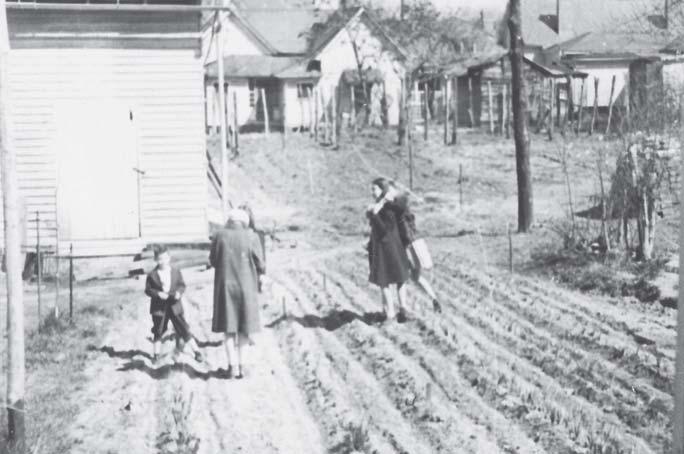
Now a lush lawn, the Parkers farmed the yard in the 1930s. The carriage house is one of the oldest of its kind still standing in Raleigh. “It was our responsibility to give this home another century of life.” —Heather Scott
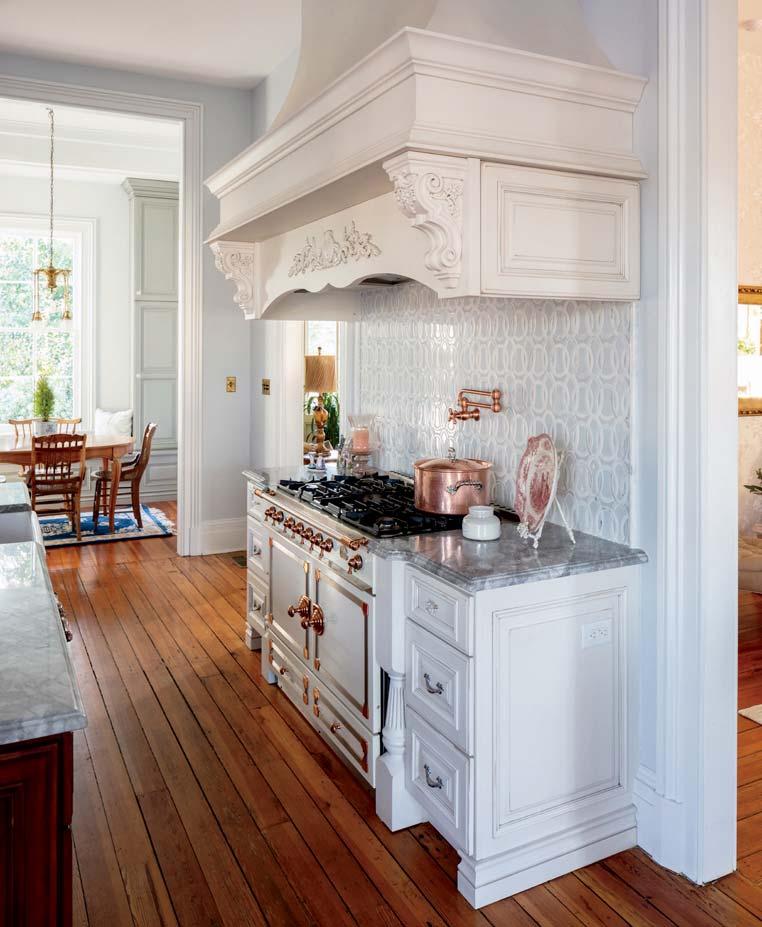
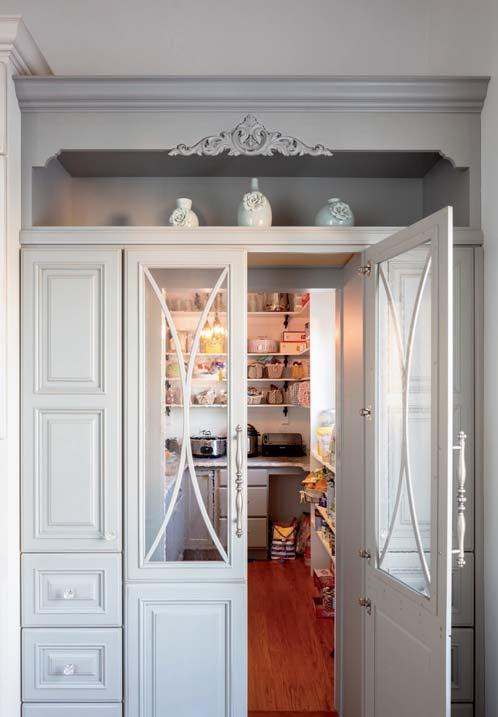
The kitchen is one of the few spaces that the Scotts designed from scratch rather than restore to its former style. When they bought the home, the space served as a living room, and the pantry and breakfast nook, right, were bathrooms for two different apartments (originally they were probably porches). Heather Scott designed the furniture-style island and oversize cabinet for the range hood. “It took three days to get it up there, then we realized that we were short on the trim and had to order a whole new length of molding.”
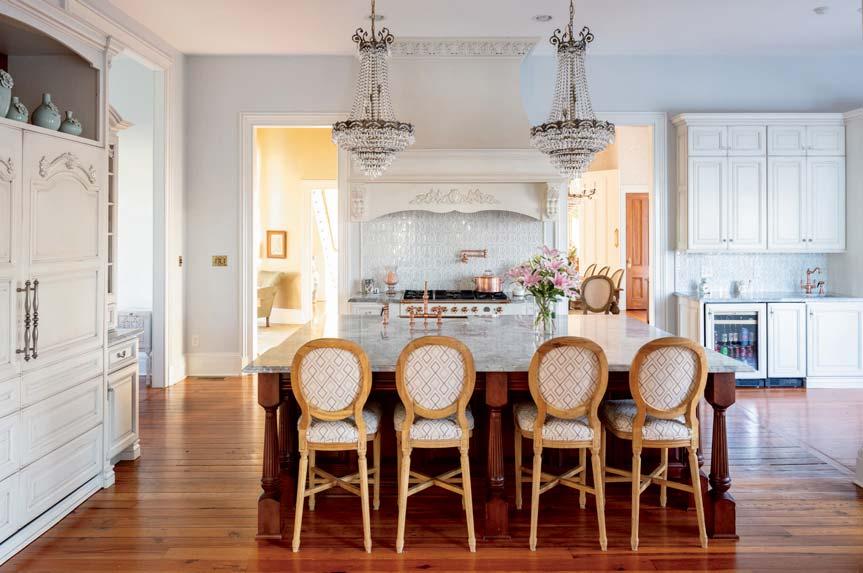
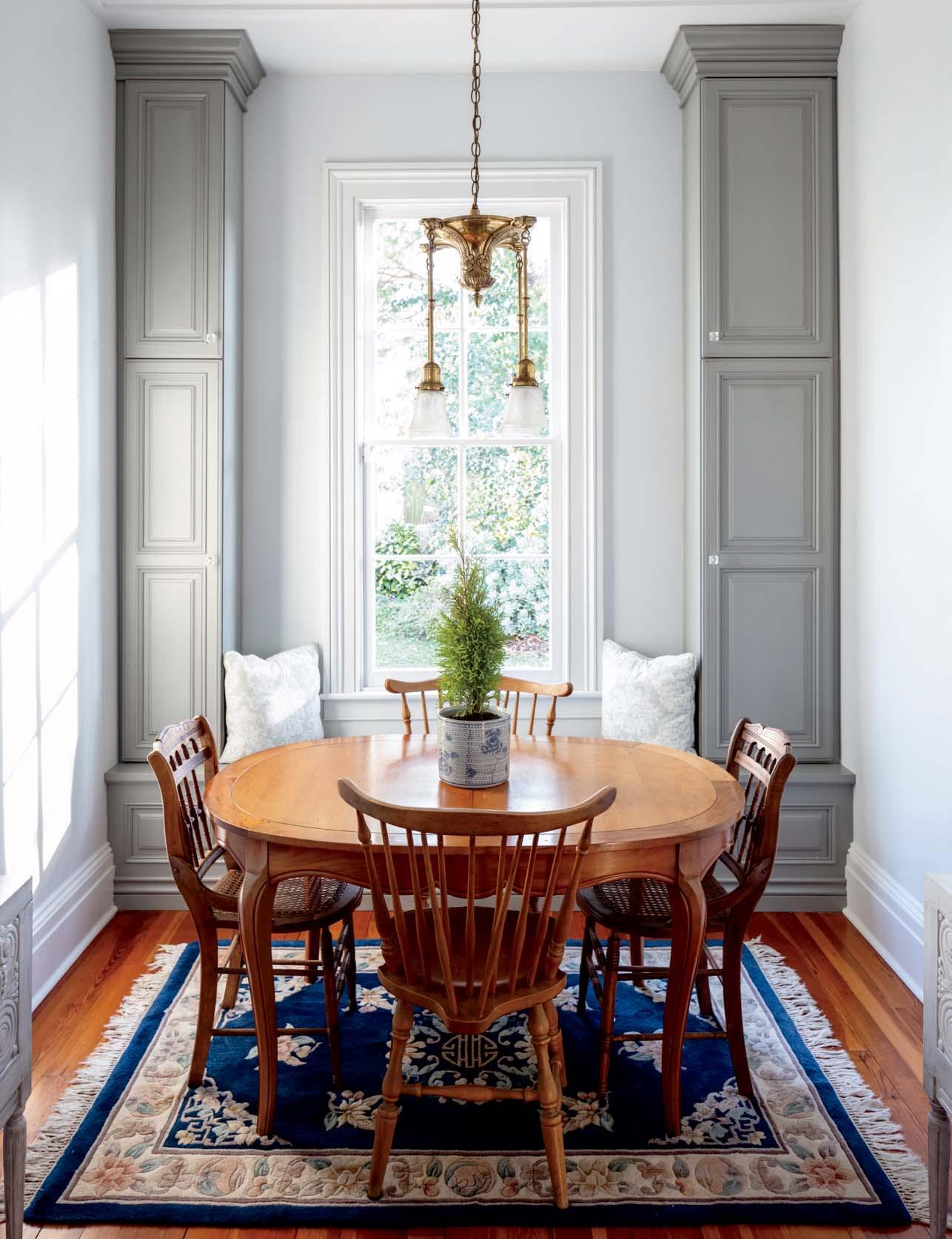
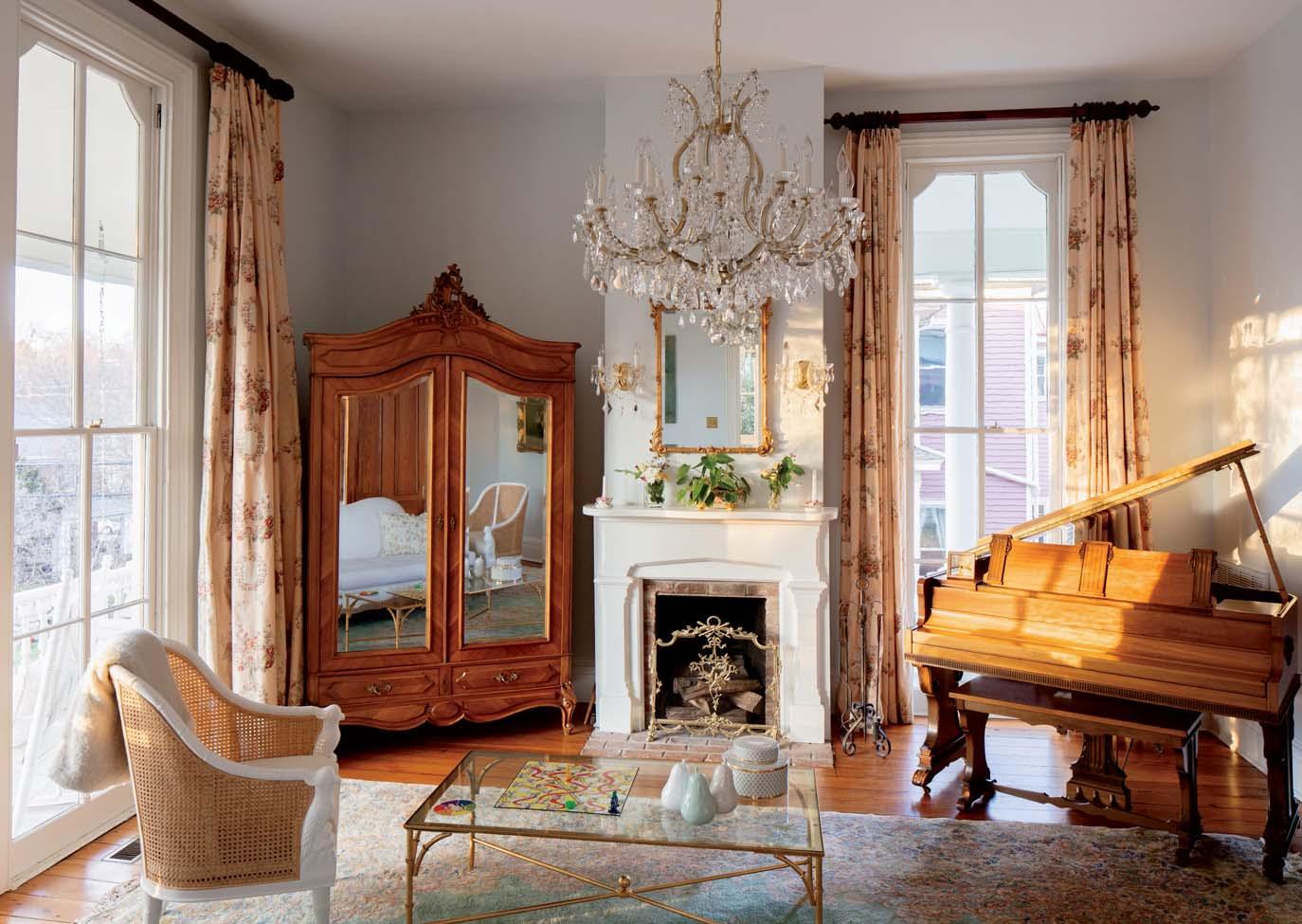
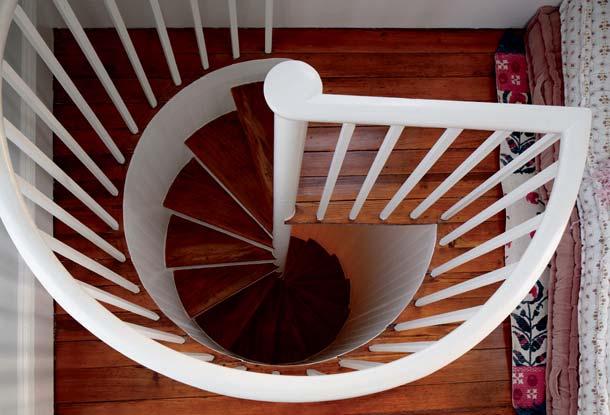
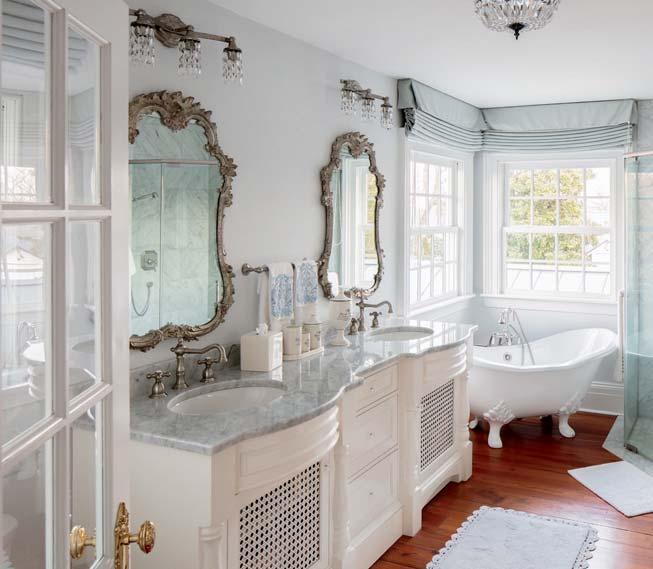
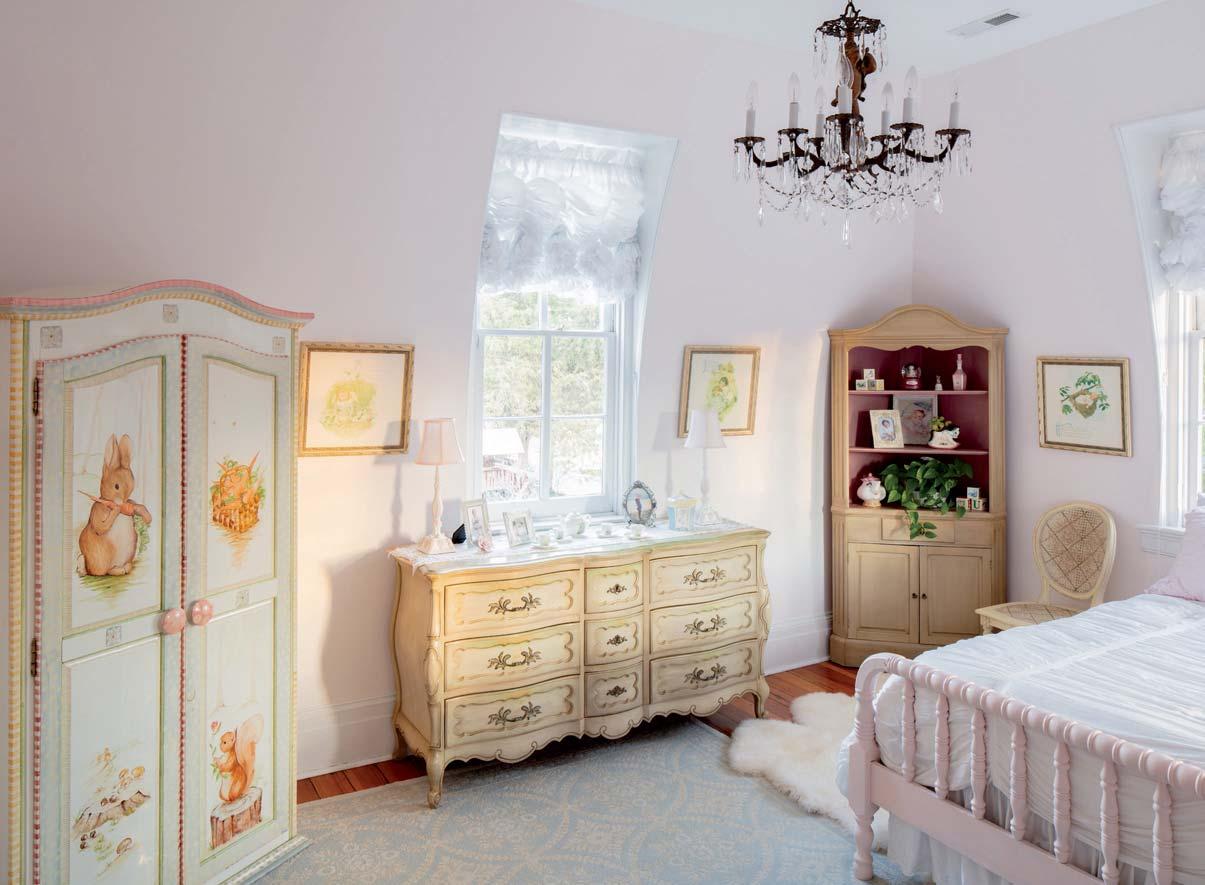
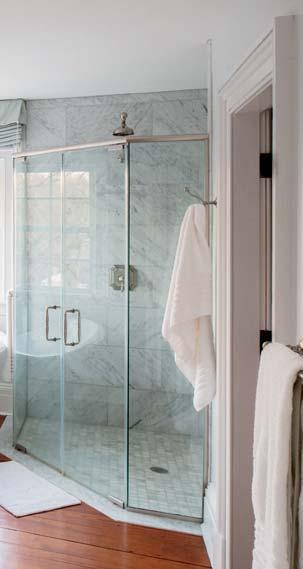
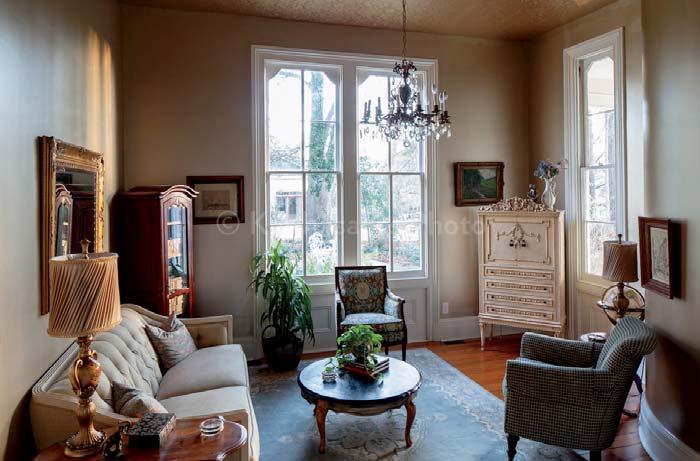
The tops of the windows in the front room, top left, were blocked by a drop ceiling that concealed plumbing and electricity. The window at right was a door to a bathroom built on the porch; the Scotts restored it using panes found in an old church in Oxford. They pulled kitchenettes out of the bedroom, above, and sitting room, below, and added a master bathroom upstairs. Far left: A view from the very top floor, a tiny room accessed by a narrow spiral staircase.
MORE BEFORE & AFTER
Find additional pictures form the renovation process on waltermagazine.com










